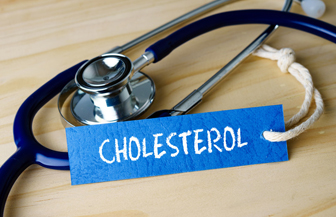High level of cholesterol or triglycerides is a risk factor for the development of heart disease. One way of lowering high triglyceride levels is by taking steps to avoid prolonged sitting or an inactive lifestyle. According to an article in Berkeley Wellness, a study from New Zealand in the Journal of Clinical Lipidology suggests that sitting with brief walks may help blunt rises in fats in the blood after meals. Big rises in triglycerides after meals are associated with increased cardiovascular risk.
The study on prolonged sitting involved 36 adults ages 18 to 40 who had primarily sedentary occupations and were at normal weight. They went through four seven-hour scenarios:
- Continual sitting where they get up only for bathroom visits
- Continual sitting followed by a 30-minute brisk walk
- Sitting with two-minute walking breaks every 30 minutes
- Sitting with two-minute breaks plus the 30-minute walk afterwards
The very next day, they repeated the scenarios for five hours but with no 30-minute walk after consuming a high-fat breakfast. Their blood samples were collected on an hourly basis to measure triglycerides, insulin, and other factors. It was found that, compared to just sitting for a long time, taking a walking break after meals resulted in a 7% reduction in triglycerides. When both breaks and a 30-minute walk were combined, triglycerides levels fell by 11%. The researchers concluded: “Overall, regular activity breaks, physical activity, and especially the two combined have the potential to facilitate a more favorable metabolic environment, which if maintained over months or years may be enough to explain why individuals who regularly break up sedentary time have better cardio metabolic health outcomes”
Apart from reducing prolonged sitting, some other measures can help lower the high triglyceride levels are:
- Mindful eating: If you often eat more calories than you burn, then your triglycerides may start to rise. To keep triglycerides in check, avoid bad fats or saturated fat and trans fats which are usually found in red meat, full-fat dairy foods, restaurant-fried food and commercially prepared baked foods.
- By taking good carbs: Low-carb diets have been linked to lower blood triglyceride levels.
- Limit your sugar intake: Minimize or avoid soda, juice, sweets and foods containing fructose which can raise triglyceride levels.
- Limit alcohol and quit smoking: Alcohol can spike triglycerides in some people. Do a simple check – avoid alcohol for few weeks and test your triglycerides to see if this works for you. Smoking is also not good for triglycerides, so quit smoking.
- Intake of good fat: Found in salmon, tuna, sardines, and other fatty fish, Omega-3 fats can lower triglycerides.
- Lose weight: When you eat more calories than you need, your body turns those calories into triglycerides and stores them in fat cells. Experts say that losing just 5% to 10% of your weight can help drive down triglycerides. So take steps to lose that flab.
- Exercise: Get moving. Exercising can boosts heart healthy HDL cholesterol.